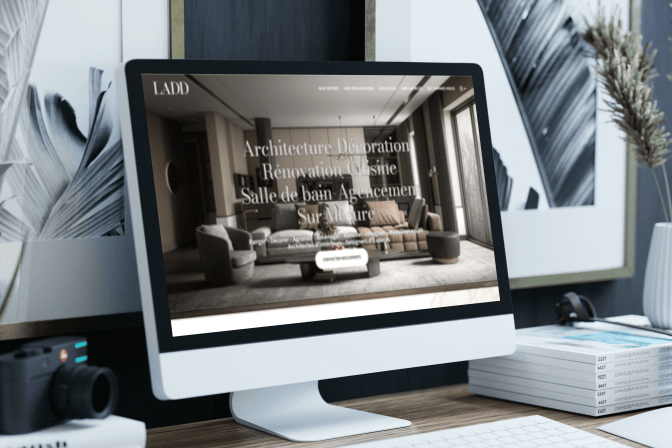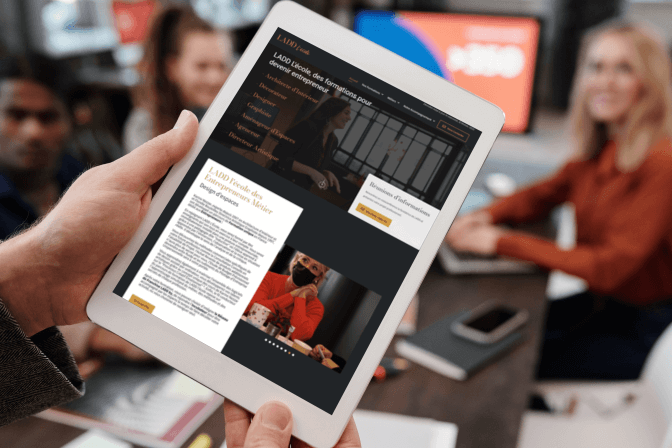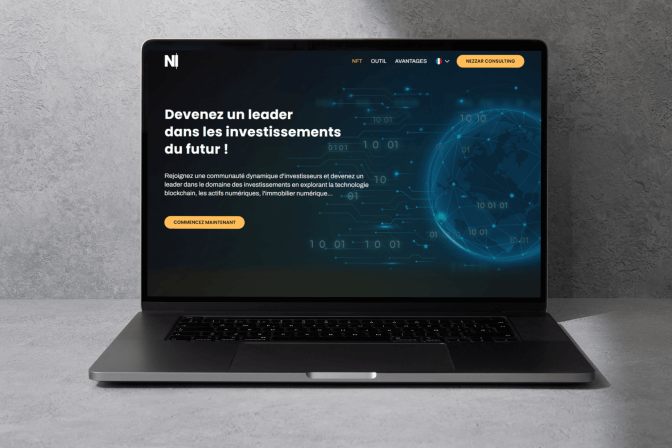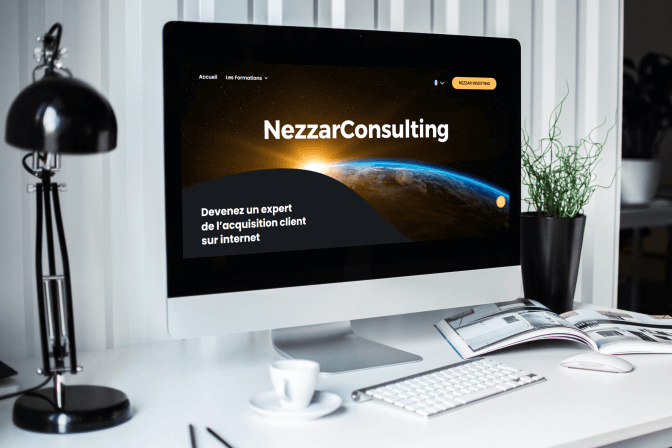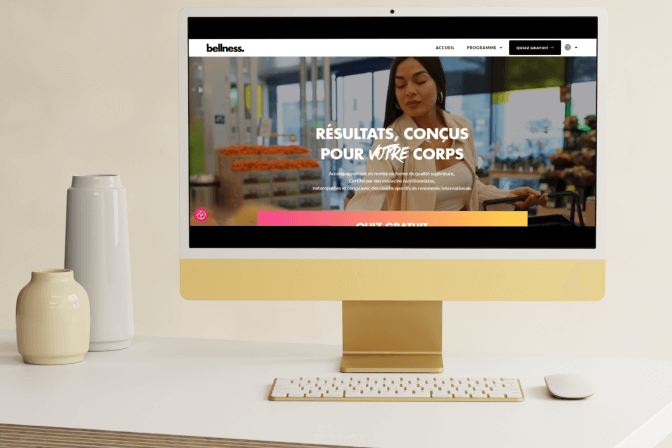The first green agency in Mauritius
Design and develop an eco-friendly website
We adopt a three-step methodological approach to ensure the eco-friendly transformation of your website. From measuring and analyzing the initial level of eco-responsibility to supporting your teams, our method aims to create an effective balance between the desire to make your website eco-friendly and the fundamental goals of your business
Presentation
Realisations
Our vision of digital
Measurement and analysis of the digital carbon footprint
The digitalization of our economy has accelerated exponentially over the past 20 years, multiplying our data consumption by 20 and, consequently, increasing the carbon footprint of digital technologies. Today, we must rethink digital professions with the goal of making our activities more consistent with the various challenges of tomorrow. This has resulted in expertise that integrates UI-UX design, web development, and brand content and is embodied by committed profiles with complementary backgrounds and skills to assist brands in their ecological transition.
The audit is based on a combination of two different measures: energy performance and environmental impact. This comprehensive analysis is carried out on all the elements that make up a website or mobile application, by measuring energy consumption upon loading, when the site is not in use, or when interactions with the back office occur.
Analysis of the environmental and energy impact of each element of the website: design, content, code, and hosting. Using the collected data, we create a mapped list of recommendations based on two variables: task complexity index vs. potential eco-design gain.
The message describes arbitrage, or making trade-offs, between the scope of a redesign based on desired eco-design level versus the company’s goals. Once the scope is defined, a requirements document will be drafted for reference when implementing approved recommendations.
For reference, 1 kg of CO2 is equivalent to 5 km by car and 1.5 litres represents a bottle of water. For 1000 visitors per month, that’s the equivalent of 10 km by car and 3 packs of water. Calculate the impact of your site based on your monthly visitors.
our
office
ICONEBENE is LEED-certified and is the first of its kind in terms of green building design in Mauritius.
Our ambition is to achieve ‘Net Zero Emissions’ and promote the ‘Future of Work’.
Our aim is also to reinvent workspaces to adopt a more flexible, hybrid, collaborative and innovative model, while focusing on the safety, well-being and productivity of teams.
We are proud to be at the forefront of these new ways of working in Mauritius.

Our ecosystem of partners
The challenge of responsible digital practices is a broad topic that needs to be shared. Therefore, we are convinced that the impact of a community is stronger in building a more sustainable society.
What is an eco-friendly website?
An eco-friendly website is a sustainable and energy-efficient website that takes the environment into consideration during its design and development. Its purpose is to minimize the impact of websites on the environment. These kinds of websites play a crucial role in reducing carbon emissions and preserving natural resources like water and energy. By creating eco-friendly websites, we can contribute to protecting the environment and combating climate change.
The importance of eco-friendly websites.
Websites have a significant impact on the environment. According to recent studies, the internet produces approximately 2% of global carbon emissions, which is equivalent to the aviation industry. This is due to the energy required to power servers, data centers, and devices used to access the internet. It is essential to reduce the impact of websites on the environment to mitigate the effects of climate change. By creating eco-friendly websites, we can reduce carbon emissions, preserve natural resources, and create a more sustainable future.
What makes a website eco-friendly?
There are several key characteristics that make a website eco-friendly. One of the most important is energy efficiency. This involves using efficient servers and data centers, as well as optimizing code and reducing file sizes to minimize energy consumption. Another important characteristic is sustainable hosting. This involves using hosting providers that utilize renewable energy sources such as wind or solar power. It is also about choosing hosting providers that are committed to sustainability and environmental responsibility.
Eco-design or retro-design of websites and mobile applications.
We develop or optimize all elements of the website or application regarding design, content, code, and hosting.
Measuring the benefits obtained from the environmental impact of digital technology.
Whether it is for website creation or redesign, we measure the reduction of CO2 emissions, water consumption, and energy consumption achieved. In the context of website creation, these measurements serve as a basis for notes that will serve as a reference for internal teams. In the context of website redesign, the objective is also to measure the gain achieved through eco-design.
Customized support
Ecological design begins with the first generation of ideas. It is prepared upstream and integrated throughout the project. Therefore, we can support teams throughout the different stages of a project, based on established constraints. This ensures a level of commitment and performance results that are closest to your needs and the reality of the project.

datacampus
The main advantages
PUE < 1,03
An energy use efficiency index among the best in the world, regardless of location.
TCO -35%
The total cost of ownership is reduced compared to an air-conditioned data center.
Electric consumption reduced by 30%.
A substantial economy, for servers and for the planet. The gain is mainly due to cooling.
Up to 60 kW per square meter.
To give you an idea, it's four times more than with the previous generation of servers and cooling systems.
A simplified infrastructure
There is no air conditioning, reduced electrical chains, and no polluting gases. These are fewer materials to maintain and reduce the risk of breakdown.
The ground footprint has been reduced by 50%.
This solution increases the density of servers in the room and requires much less additional technical space.
DataCampus
Hosting: DataCampus with immersion cooling
Immersion cooling is a technique for cooling computer hardware that involves submerging computer components or entire servers in a dielectric liquid, which is a heat-conducting coolant. This method cools the servers and transfers heat from the source to the liquid.
The use of immersion cooling has many benefits, including the ability to use data in a more environmentally friendly and sustainable way. Environmental concerns have been one of the main drivers of the adoption of this technology in data centers around the world in recent years.
Traditionally, most data centers used air cooling to maintain the temperature of their IT equipment. However, recent studies have shown that air cooling no longer meets the requirements of modern data centers. Immersion cooling is an attractive solution due to its ability to provide high density, low latency, and higher levels of efficiency and durability compared to air.

Our Achievements
Each project is the result of a close collaboration with our clients.
Client Review
What our clients think of our agency

Karine NEZZAR

Allan VALET

Sandra BARBEREAU

Matthias NEZZAR

Sophie LAW PANG

Christophe CORONA

Vimi MATHURA

Our Technologies
- Python
- Strapi
- Kotlin
- Symfony
- Bubble
- Drupal
- WordPress
- PHP
- React JS
- Node JS
- FlutterFlow
- Vue JS
- Bootstrap
- Tailwind CSS
- Java
- .Net
- Magento
- Prestashop
- Sylius
- Zend
- Laravel
- Sitecore
- IOS SDK
- Javascript
- React Native






